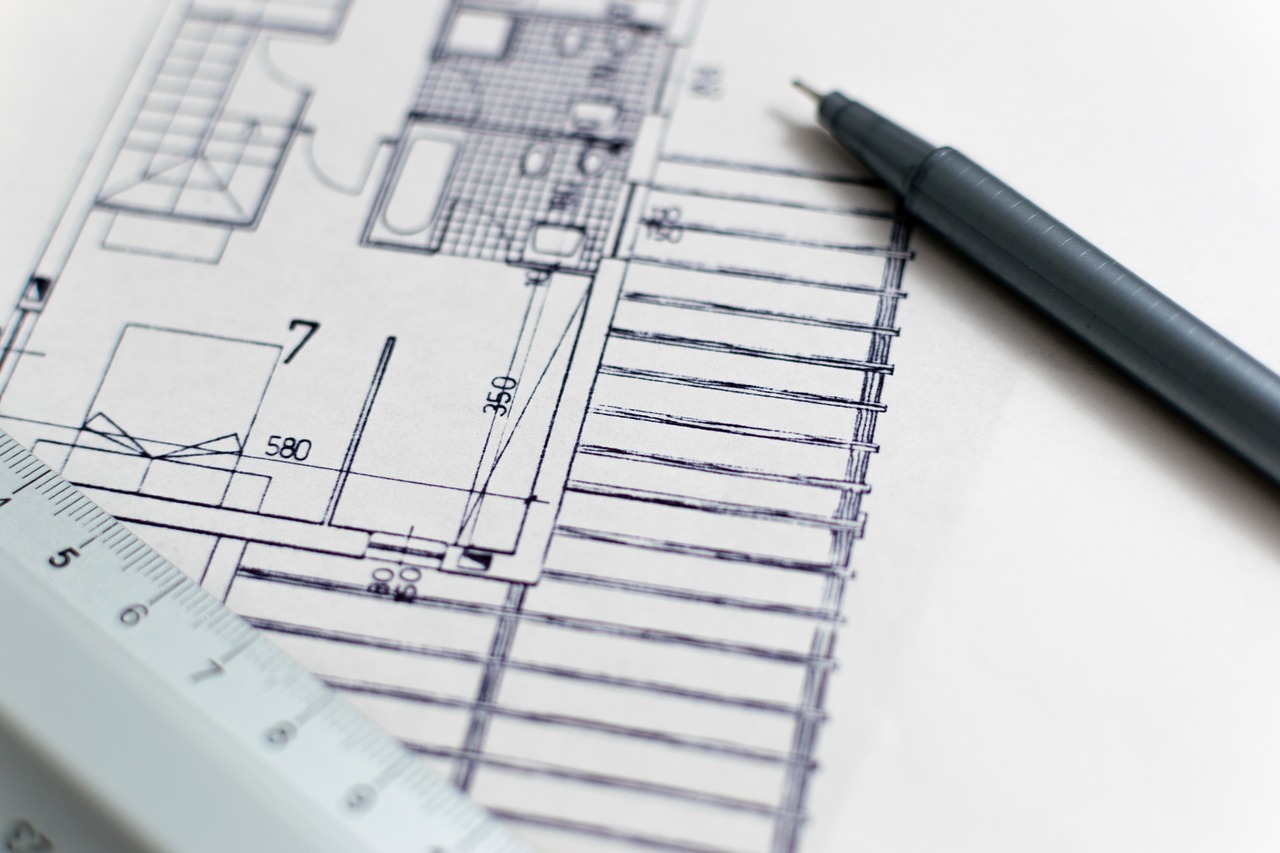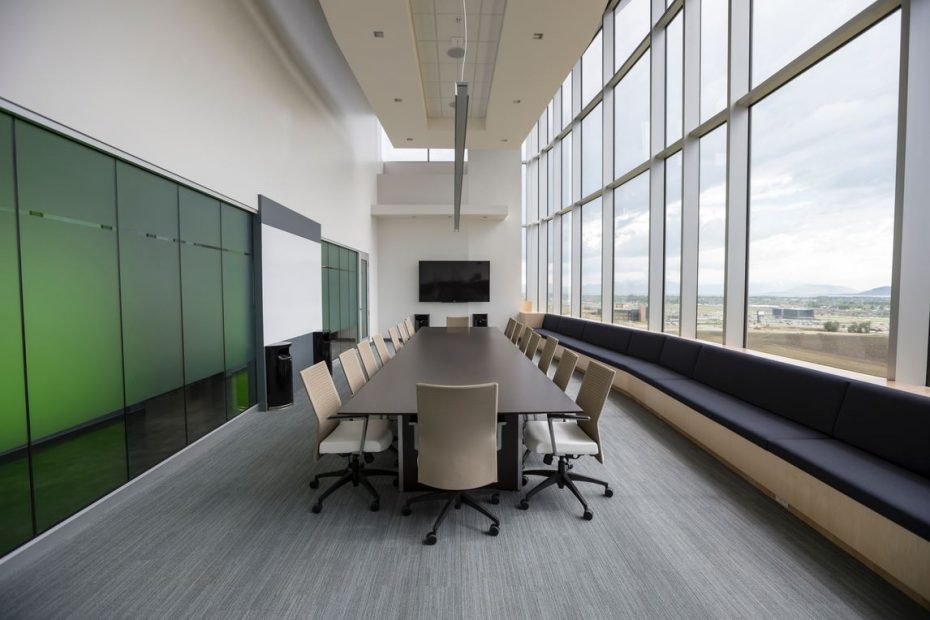Most business owners who are considering moving into a new space must work with an architect at some point.
Architects bring office dreams and ideas to life with beautiful concepts and renderings. They make it possible for your whole team to visualize a potential new space long before construction begins.
Their expertise is often a central requirement, along with that of a general contractor, to help a new office take shape.
Although it seems involving these professionals early in the process would be a good idea, there are several things to clarify internally first.
After all, architects’ time is very valuable. Paying for plans that haven’t been fully thought out or that your team doesn’t like can waste thousands of dollars on what is already an expensive proposition.
So, before you hire an architect, have a clear idea of exactly the kind of office your company really needs. That way, they’ll be more likely to create concepts that you and your employees love, and the moving process will proceed more smoothly.
Here are steps to take before you start your search for an architect.
Assess Employees’ Feelings and Expectations
Office moves are stressful for employees. The stress doesn’t just come from physically moving their office contents, learning new routes to work, and adapting their routines to a new environment — although those are stressful enough.
There are deeper anxieties at work. Here are a few of the other things that employees may worry about:
Productivity
Your employees know better than anyone what kind of office will help them get their work done more easily. If they need lots of quiet time and private space to work effectively, an open floor plan will not be welcomed. If they value a social environment and collaborative atmosphere, they’ll resent an office with no communal areas. As they picture their future office, employees are quietly hoping that a new potential office will have the set of features that will make their work easier and more pleasant.
Status
Employees also have expectations (conscious or not) about how their office reflects their role in the company. They’ll look at the square footage and features of their personal workspace and compare it to their coworkers’ spaces. They’ll note whose offices are closest to the offices of the company’s top-ranking officials and wonder what it says about how they’re valued within the organization.
Future Growth
Companies rarely move, so each move could be seen as a reflection of long-term priorities. A company that is expecting growth probably won’t move into a space that’s smaller than the previous one, for example. If your new space sends the message that your company isn’t doing well or isn’t willing to invest in its employees, it’s a strong signal that could hurt employee retention.
To understand employees’ thinking on each of these factors, ask employees for their insights. Ask what they’d like the most in a new office, and what they like and don’t like about the existing space. Ask them what would help them do their jobs better, and what would make them enjoy coming to work more.
You can survey employees anonymously, or put a team together to collect the information through direct interviews. You can ask employees to score and rank different potential features, or keep it to frank, in-person conversations that are transcribed later. The important thing is to find a way that works for your company to really connect with employees on this important issue.
Keeping employees invested in the moving process and setting expectations early on will help to optimize productivity throughout the transition.
Create Clear Objectives for the New Office
Armed with your data from employee surveys and interviews, you can decide exactly how you want the new office to shape employee behavior and work patterns.
It helps to make these goals as specific as possible.
For example, you can state that you want an office space that encourages “creativity.” But it helps more to state exactly what you expect employees to be able to do in the office to make that a reality.
For example, do you want employees to spend more time brainstorming together? Your space will need plenty of inspiring breakout spaces, meeting rooms, and even walking paths.
Creativity often requires extra time to think about a problem from many different angles. To encourage that, your office might benefit from quiet, uncluttered spaces, or a quirky design aesthetic that encourages out-of-the-box thinking.
Challenge yourself to get specific and ask employees to clarify what kind of office would serve them best. A potential architect will have further insights on how to make your goals a reality, but first you have to get clear and honest about what activities you want to be taking place in each space of your new office.
Make Sure Your New Office Will Send the Right Message
We’ve talked a lot on this blog about how your physical office sends a message about your company’s brand.
As we mentioned in our post on 3 Ways Your Reception Area Makes an Impression, it helps to ask what message you’re trying to send to visitors as soon as they walk in the door:
“For example, if you’ve branded your company as fun and vibrant, the main mission of your front desk might be to energize and inspire everyone who walks in. If the most important thing for your company to project is a sense of expertise and professionalism, the main purpose of the front desk might be to evoke feelings of trustworthiness, efficiency, and competency. If you’re a luxury brand, you might want your front office to make a distinctive statement that surprises and even intimidates visitors.”
If your architect knows exactly what feelings you want people to have in your office space, they can design a space that uses light, color, and layout in a way that evokes those feelings.

If you don’t have a clear idea of the impression you want to make, you risk coming across as bland and forgettable to visitors and creating a work environment that employees won’t enjoy coming to each day.
As we wrote in our post 5 Ways to Style a Beautiful Reception Area:
If you don’t strive to make a distinct impression, your office may come across as bland and forgettable #receptionistapp Click To Tweet“Developing a distinctive style means making some choices: A space can’t be both calming and energizing, for example. It also can’t be both playful and serious, or both approachable and awe-inspiring. By choosing which feelings you want to evoke, you’ll distinguish yourself and stand out from the crowd.”
If you’re struggling to articulate exactly what you want your office to accomplish, think a little more about exactly who will be coming into the reception area (related: How to Categorize Your Business Visitors) and what will make them feel comfortable.
What to read next:
- How to Plan for an Office Move
- For a Fun, Playful Office, Add These Elements
- 4 Modern Tools for the High-Tech Office
Share this Post

